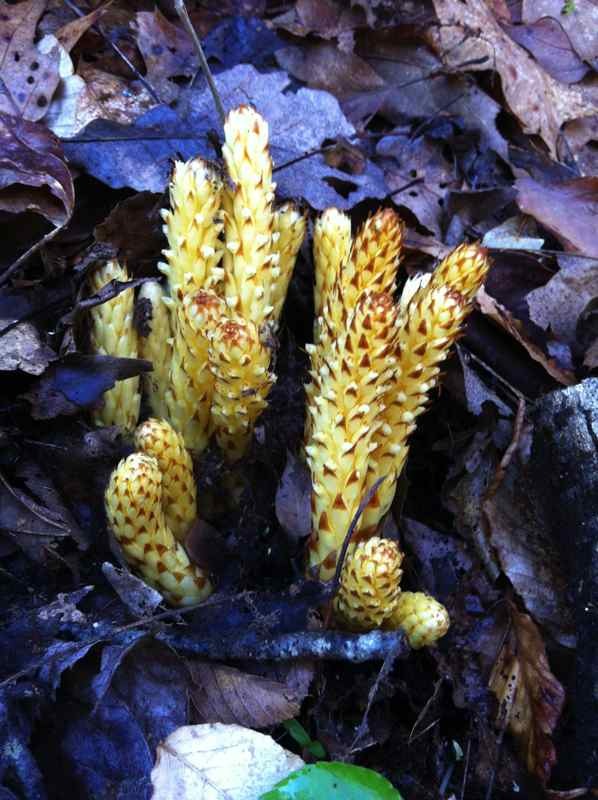Sap Sucking Parasite!
/For those of you who may not know it I have a special place in my heart for parasites. especially Dipterian (flies) parasites of birds and mammals. I find the ecology of parasites endlessly fascinating.
On one of my bike rides this week I spotted another pretty cool parasite. This one a plant, Conopholis americana, commonly called squaw-root or cancer-root.
Conopholis americana, 4 April 2012, Fisher Branch, near Mars Hill, North Carolina.
Unlike most other plants C. americana has no chlorophyll and does not require any light whatsoever. It gets everything it needs from the roots of other plants. More specifically, actually, quite specifically, oak trees.
Much to my surprise, it appears that not much is known about the life history of this species. The bulk of the plant is in the form of a gall that is attached to the roots of oak trees. What you see in the photograph is the flower stalks that push up through the ground about 3-8 inches. One of the few studies that I found stated that it appears to be largely autogamous (self-pollination), however, some pollination by insects, such as bumblebees, has been documented. How it's seeds are distributed and how those seed find the roots of oak trees seems to be largely a mystery, although some long distance seed dispersal has been documented through mammals, mostly white-tailed deer.
It is found in eastern North America from Nova Scotia, west to Iowa and Wisconsin and south to Mississippi and northern Florida. In the states of New Hampshire, New York, and Rhode Island it is considered threatened. There is a very similar species C. alpina found in the mountains of New Mexico, Arizona and Texas, which is an obligate parasite to ponderosa pines.
In addition to its interesting life history, I think it just looks pretty darn cool, and so does William.
Ride lots, stop often,
Russell


